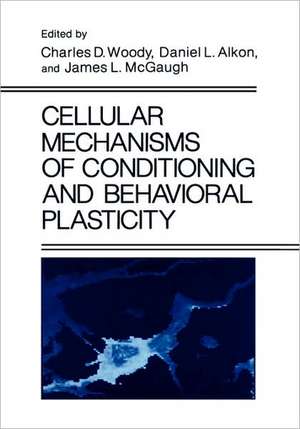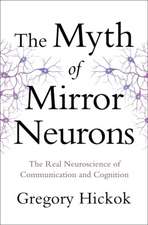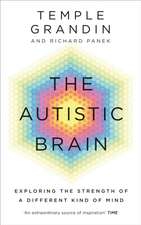Cellular Mechanisms of Conditioning and Behavioral Plasticity
Editat de D.L. Alkon, J.L. McGaugh, C.D. Woodyen Limba Engleză Hardback – 30 mar 1988
| Toate formatele și edițiile | Preț | Express |
|---|---|---|
| Paperback (1) | 1235.08 lei 6-8 săpt. | |
| Springer Us – 16 mai 2013 | 1235.08 lei 6-8 săpt. | |
| Hardback (1) | 1243.15 lei 6-8 săpt. | |
| Springer Us – 30 mar 1988 | 1243.15 lei 6-8 săpt. |
Preț: 1243.15 lei
Preț vechi: 1516.03 lei
-18% Nou
Puncte Express: 1865
Preț estimativ în valută:
237.88€ • 254.37$ • 198.34£
237.88€ • 254.37$ • 198.34£
Carte tipărită la comandă
Livrare economică 17 aprilie-01 mai
Preluare comenzi: 021 569.72.76
Specificații
ISBN-13: 9780306426506
ISBN-10: 0306426501
Pagini: 538
Ilustrații: XIV, 538 p.
Dimensiuni: 178 x 254 x 30 mm
Greutate: 1.18 kg
Ediția:1988
Editura: Springer Us
Colecția Springer
Locul publicării:New York, NY, United States
ISBN-10: 0306426501
Pagini: 538
Ilustrații: XIV, 538 p.
Dimensiuni: 178 x 254 x 30 mm
Greutate: 1.18 kg
Ediția:1988
Editura: Springer Us
Colecția Springer
Locul publicării:New York, NY, United States
Public țintă
ResearchDescriere
I would like first to thank Charles Woody and his organizing committee for arranging the symposium on the "Cellular Mechanisms of Conditioning and Behavioral Plasticity," which was also a satellite meeting of the International Union of Physiological Sciences 30th International Congress. The proceedings of this symposium are represented by the chapters that follow. During the 1970s, Dr. Woody and co-workers were able to carry out a remarkable series of microelectrode studies, both intracellular and extracellular, of cortical nerve cells during conditioning of the eye-blink response to sound in the intact waking cat. He demonstrated enduring changes in excitability and membrane resistance in pericruciate cortical cells during associative conditioning of the eye blink, changes that are facilitated by ACh and cGMP and reinforced by stimulation of the hypothalamus (the latter con firming the original studies of Voronin). These findings have been of considerable im portance in our attempt to understand the conditioning process at the cellular level.
Cuprins
I—Some Different Perspectives on the Basic Mechanisms.- 1. The Cellular Basis for Short-Term Memory in Endocrine Systems.- 2. An Increased Basal Calcium Hypothesis for Long-Term Potentiation of Transmitter Release in Bullfrog Sympathetic Ganglia.- 3. Sprouting as a Basis for Classical Conditioning in the Cat.- 4. Is Conditioning Supported by Modulation of an Outward Current in Pyramidal Cells of the Motor Cortex of Cats?.- 5. Conservation of Cellular Mechanisms for Models of Learning and Memory.- II—Long-Term Potentiation.- 6. Long-Term Potentiation of Synaptic Transmission in the Hippocampus Obeys Hebb’s Rule for Synaptic Modification.- 7. Chloride-Mediated Feedforward Inhibition Is Not Involved in Long-Term Potentiation.- 8. ?-Adrenergic Mechanisms in Long-Term Potentiation and Norepinephrine-Induced Long-Lasting Potentiation.- 9. Mechanisms of Noradrenergic Modulation of Dentate Gyrus Long-Term Plasticity.- III—Conditioning.- 10. Conditioning-Specific Biophysical Alterations in Rabbit Hippocampus.- 11. Serotonin and Aversive Conditioning in Adult and Juvenile Snails.- 12. Catecholaminergic and Opioid Mechanisms in Conditioned Food Intake Behavior of the Monkey Amygdala.- 13. The Neural Circuitry Subserving Aversive Conditioning of Contact Placing in Cats: The Necessity of the Internal Pallidum and Dispensability of the Cerebellum.- 14. Essential Involvement of Mossy Fibers in Projecting the CS to the Cerebellum during Classical Conditioning.- 15. Plasticity in Inferotemporal Cortex-Amygdala-Lateral Hypothalamus Axis during Operant Behavior of the Monkey.- 16. Responses of Nucleus Basalis of Meynert Neurons in Behaving Monkeys.- 17. Neurophysiological Investigations of Tonic Mechanisms of Conditioning.- 18. Hippocampal Units during Single-Alternation Conditioning in the White Rat.- 19. Conditioning and Habituation of the Arousal Response: A Historical Perspective.- 20. A Preliminary Note on Spatial EEG Correlates of Olfactory Conditioning.- 21. A Theoretical Neuronal Learning Mechanism That Predicts the Basic Categories of Classical Conditioning Phenomena.- IV—Anatomy and Cable Properties.- 22. Dendritic Spine Synapses, Excitable Spine Clusters, and Plasticity.- 23. Electrodiffusion Model of Electrical Conduction in Neuronal Processes.- 24. The Effectiveness of Individual Synaptic Inputs with Uniform and Nonuniform Patterns of Background Synaptic Activity.- 25. Passive and Active Properties of Motoneuron Dendrites.- 26. Some Conclusions Relevant to Plasticity Derived from Normal Anatomy.- 27. Anatomic Observations on Afferent Projections of Orbicularis Oculi and Retractor Bulbi Motoneuronal Cell Groups and Other Pathways Possibly Related to the Blink Reflex in the Cat.- V—Storing and Retrieving Information.- 28. Mammalian Systems for Storing and Retrieving Information.- 29. Humanlike Characteristics of Visual Mnemonic System in Macaques.- 30. Neuronal Activity in the Inferomedial Temporal Cortex Compared with That in the Hippocampal Formation: Implications for Amnesia of Medial Temporal Lobe Origin.- 31. Plasma Glucose Regulation of Memory Storage Processes.- 32. Behavioral Pharmacology of Memory: Opportunities for Cellular Explanations.- VI—Presynaptic and Postsynaptic Plasticity.- 33. Synaptic Efficacy Is Controlled by the Concentration of Transmitter in the Nerve Ending.- 34. Short-Term and Long-Term Plasticity Mediated by Changes in Responding Synapses at Crustacean Neuromuscular Junctions.- 35. Postsynaptic Events Associated with Long-Lasting Activity-Induced Changes in Excitability of Neocortical Neurons: Studies in the Anesthetized Rat and in Slices in Vitro.- 36. Postsynaptic Activity-Dependent Facilitation of Excitatory Synaptic Transmission in the Neocortex.- 37. The Role of Neuronal Activity in the Long-Term Regulation of Synaptic Performance at the Crayfish Neuromuscular Junction.- 38. Long-Term Effects of Firing on Excitability of Hippocampal CA1 Neurons.- 39. Locus-Coeruleus-Induced Enhancement of the Perforant-Path-Evoked Potential: Effects of Intradentate ? Blockers.- 40. Persistent Changes of Single-Cell Responses in Kitten Striate Cortex Produced by Pairing Sensory Stimulation with Iontophoretic Application of Neurotransmitters and Neuromodulators.- 41. Norepinephrine-Dependent Neuronal Plasticity in Kitten Visual Cortex.- 42. Possible Indications of Noradrenergic Involvement in Behavioral Plasticity.- VII—Biophysical Considerations and New Approaches.- 43. Digital Imaging of Ca2+ Levels in CNS Neurons under Conditions That Induce Facilitating Increases in Ca2+ Levels and Sustained Ca2+ Elevation.- 44. A Method to Investigate a Metabolic Process in a Single Neuron and Its Utilization in the Study of Fast Axonal Transport of Acetylcholine in a Cholinergic Neuron of Aplysia.- 45. Modulation of the GABA- and Pentobarbital-Gated Cl Current by Intracellular Calcium in Frog Sensory Neurons.- 46. Contrasting Roles of a Brain-Specific Protein Kinase C Substrate: Has Protein F1 Evolved a New Function in CNS of Higher Vertebrates?.- 47. Evolutionary Origin of Electrical Excitability.- Contributors.












